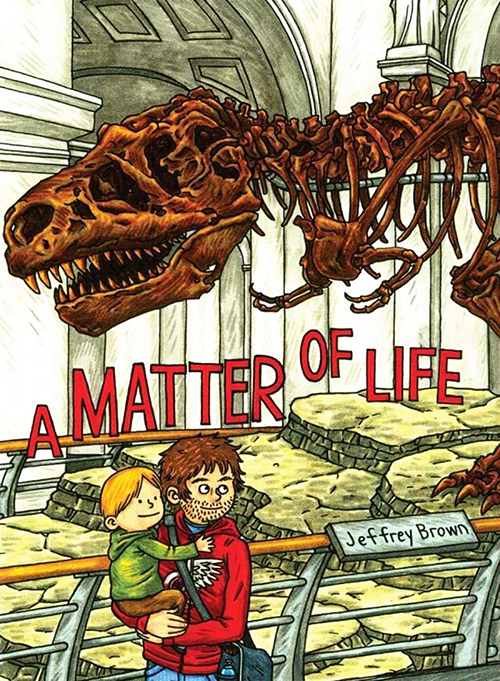From beginning writing classes to novelist question-and-answer sessions, one of the most common pieces of advice given to writers is to “write what you know.” It explains why so many authors choose to write about themselves. What does one know better than oneself?
Faith and fatherhood in graphic form

Productions. Photo © Top Shelf Productions
From beginning writing classes to novelist question-and-answer sessions, one of the most common pieces of advice given to writers is to “write what you know.” It explains why so many authors choose to write about themselves. What does one know better than oneself?
Cartoonist Jeffrey Brown is known for his ability to turn the microscope on himself without pulling any punches; one of his previous graphic memoirs is My Funny Misshapen Body.
Brown recently found mainstream success with the immensely popular Star Wars-themed children’s book Darth Vader and Son, and the latest follow-up, Star Wars: Vader’s Little Princess. No doubt Brown pulled from his own experiences as a father to create some of those humorous situations with young Luke Skywalker and Leia Organa.
A Matter of Life sees Brown returning to autobio-comics, courtesy of Top Shelf Productions. The book assembles scenes from Brown’s past and present to ruminate on faith and fatherhood, from the perspective of both father and son.
Much of the first half is focused on faith, and Brown’s gradual loss of it. Those keen on graphic memoirs will know the beats: finding contradictions in the Bible, growing disinterested in church, coming out as secular to religious parents.
To be fair, it’s not as though Brown is cribbing from other artists. He lived these moments himself. The problem is that a lot of other cartoonists have gone through similar trials and have already put these memories to paper.
The strength in A Matter of Life comes from the fatherhood angle. Familiar childhood situations take on a new light when we flash forward to today, now that Brown has a young son of his own. In turn, he reflects on his relationship with his own father.
It’s an uncommon sight in comics; by the time many artists grow up and have children they’re no longer writing about their own lives. Slice-of-life parenthood is simply more refreshing than tales of depressed and alienated teenagers who like to draw.
That’s not to say that rarity is all that A Matter of Life has going for it. Brown has a knack for honest and reliable storytelling, and almost seems to revel in self-deprecation.
Part of the charm comes from the somewhat crude art style. Most pages are divided into a 12-panel grid, with some alterations here and there. This gives Brown a small area to work with, but it’s where his simple, expressive line work shines.
In the space of just a couple square inches, Brown has no problem depicting shame, anxiety, anger or the joy of childhood. From the flawed, handwritten text to the visible strokes in the coloring, each aspect of Brown’s visual style grounds the work. On every page we get the comforting reminder that a real person—not some master-artist demigod—created this work.
A Matter of Life finishes on an ambiguous but positive note regarding both faith and fatherhood. There’s no ultimate realization, no epiphany. The book just sort of ends. And life goes on.




